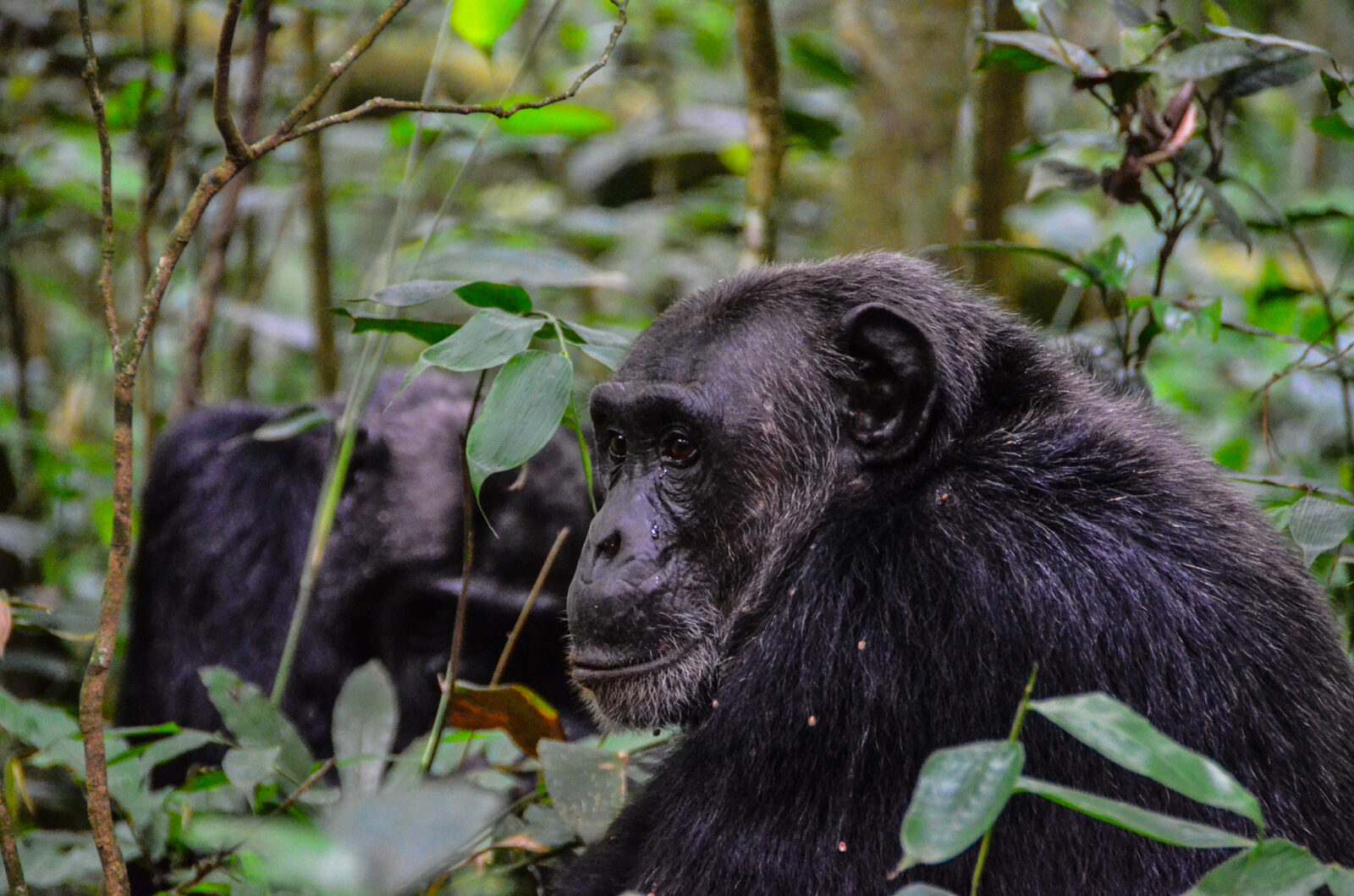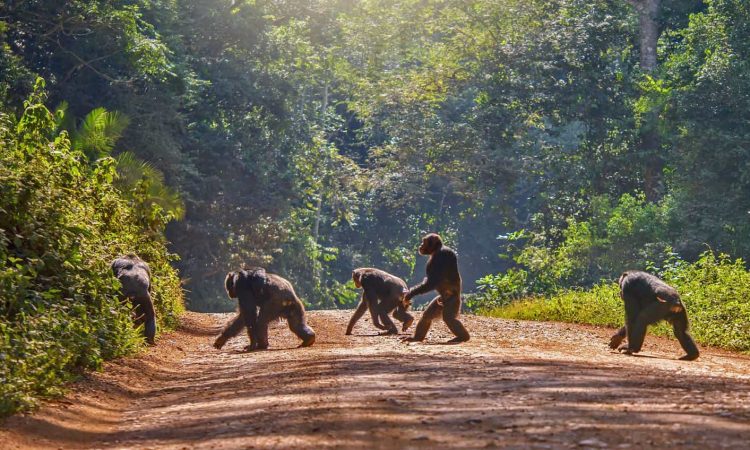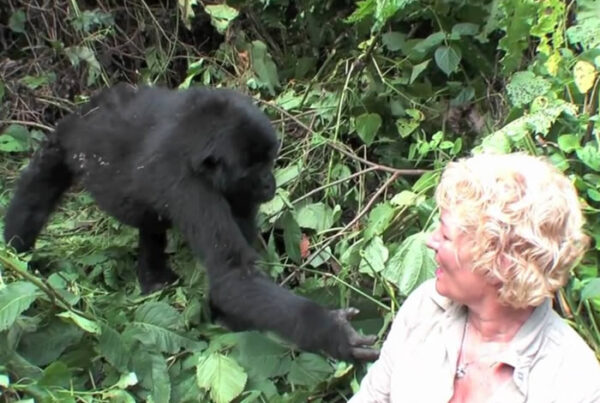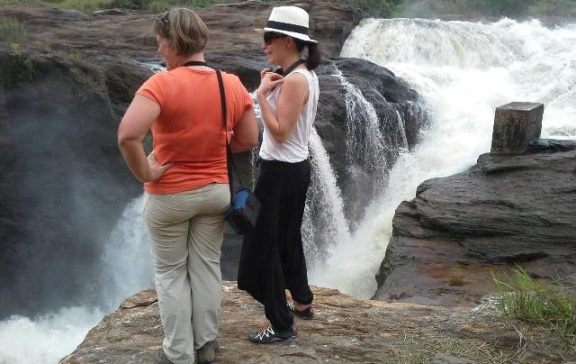Chimpanzee Habituation Experience in Kibale
The Intimate World of Chimpanzees
Deep within the lush rainforests of western Uganda, Kibale National Park harbors a wealth of wildlife, earning its reputation as a haven for primates. Among the park’s most extraordinary offerings is the chimpanzee habituation experience, a rare and immersive opportunity that allows visitors to witness the daily lives of chimpanzees while observing the painstaking process by which wild primates become accustomed to human presence. Unlike conventional chimpanzee tracking, habituation invites participants to spend extended periods in close proximity to these intelligent, socially complex animals, offering profound insights into their behaviors, interactions, and the forest ecosystems that sustain them.
The experience is not only a journey into primatology but also a lens through which conservation, research, and ethical tourism intersect. Chimpanzee habituation in Kibale underscores the delicate balance between human curiosity and wildlife preservation, demanding both respect and patience from visitors. This guide provides an in-depth exploration of the chimpanzee habituation experience, detailing its objectives, processes, ecological context, visitor preparation, and the transformative encounters it facilitates.
Understanding Chimpanzee Habituation
What Habituation Entails
Chimpanzee habituation is a carefully controlled process in which wild chimpanzee communities are gradually accustomed to human presence. This is achieved through consistent, non-threatening interactions conducted by experienced researchers and park rangers. The goal is not to domesticate the animals but to allow them to behave naturally in the presence of humans for observation, research, and eco-tourism.
During the habituation process, chimpanzees are monitored daily, with their movements, feeding habits, social interactions, and nest-building behaviors meticulously recorded. Visitors participating in habituation walks are guided to follow strict protocols, maintaining distances, minimizing noise, and avoiding sudden movements. This approach ensures that the chimpanzees remain wild and that their natural behaviors are not disrupted.
Ecological and Scientific Importance
The habituation of chimpanzees provides invaluable data on primate behavior, cognition, and social structure. Researchers gain insights into communication, tool use, dietary preferences, reproductive strategies, and intergroup dynamics. The knowledge generated contributes to global understanding of primates, informs conservation strategies, and supports efforts to mitigate human-wildlife conflict.
From a tourism perspective, habituation offers a rare, ethical way to witness chimpanzees over prolonged periods, fostering both education and empathy. The practice reinforces the importance of protecting forest habitats, ensuring that chimpanzee populations continue to thrive alongside sustainable human activity.
Location and Accessibility
Kibale National Park is situated near Fort Portal in Uganda’s Kabarole District, approximately 300 kilometers southwest of Kampala. The park encompasses 795 square kilometers of tropical rainforest, grasslands, and swamp forests, providing an ideal environment for chimpanzee communities.
Access to the park is most commonly achieved by road. The journey from Kampala takes roughly 5 to 6 hours, passing through scenic highlands, agricultural landscapes, and local settlements. Fort Portal serves as a logistical hub, offering accommodations, dining options, and transportation services to the park. Upon arrival at the park headquarters, visitors receive briefings, permits, and instructions for the habituation experience, ensuring a smooth and informed start to the day.
Preparing for the Habituation Experience
Physical and Mental Preparation
Participation in chimpanzee habituation requires both physical stamina and mental focus. Trails can be muddy, uneven, and occasionally steep, particularly after rainfall, necessitating sturdy footwear, long-sleeved clothing, and rain gear. Trekking poles are recommended for balance and support, while hydration and light snacks help maintain energy during long forest walks.
Mentally, patience is essential. Habituation involves periods of observation where chimpanzees may remain elusive or move away from human presence. Visitors are encouraged to embrace the unpredictability of the forest, appreciating subtle signs such as vocalizations, footprints, and feeding evidence as part of the immersive experience.
Equipment and Essentials
Binoculars, cameras with zoom lenses, insect repellent, and personal first-aid items are advised. All equipment must be used responsibly to prevent disturbance to the chimpanzees or their habitat. Guides often provide additional support, including educational commentary, identification of flora and fauna, and assistance in navigating challenging terrain.
The Habituation Process: Step by Step
Morning Briefing and Orientation
Each habituation session begins with a morning briefing at the park headquarters. Rangers and researchers outline the objectives, safety measures, and behavioral protocols. Participants are instructed on maintaining distance, minimizing noise, and respecting chimpanzee behavior. Emphasis is placed on ethical engagement, ensuring that visitors understand their role in safeguarding wildlife and the forest ecosystem.
Entering the Forest
Guided by experienced rangers, visitors enter the rainforest along established trails. The forest is dense, with a multilayered canopy, epiphytes, and undergrowth teeming with life. Sounds of birds, insects, and distant chimpanzee calls create a living symphony that heightens the sensory experience. The forest environment provides insight into the complexity of ecosystems in which chimpanzees thrive, highlighting their dependence on diverse habitats and abundant food resources.
Observing Early Stages of Habituation
Initially, habituated groups may be partially accustomed to human presence, while others remain wary. Visitors witness subtle behavioral adaptations, such as increased tolerance of ranger proximity, gradual acceptance of observers at a safe distance, and normal resumption of feeding and social activities despite nearby humans. These early observations illustrate the careful balance between curiosity, caution, and adaptation that defines habituation.
Extended Observation Periods
Over time, habituation allows for prolonged observation of chimpanzees as they engage in daily routines. Nest-building, foraging, grooming, play, and vocal communication can be observed closely. Researchers and guides interpret behaviors, providing context regarding social hierarchies, alliances, and individual personalities. Visitors gain a rare perspective on chimpanzee cognition and emotional expression, witnessing behaviors that are both familiar and astonishingly complex.
Interpreting Ecological Interactions
Chimpanzee behavior is closely linked to ecological conditions. Feeding patterns reflect fruit availability, insect abundance, and seasonal variations. Movement through the forest illustrates territorial boundaries, predator avoidance, and habitat utilization. Visitors are guided to notice these interactions, fostering an understanding of the dynamic relationship between primates and their environment.
Wildlife Encounters Beyond Chimpanzees
While chimpanzees are the focus of habituation, the forest hosts numerous other species that enrich the experience. Colobus monkeys, red-tailed monkeys, and olive baboons are frequently observed, exhibiting behaviors such as leaping between branches, social grooming, and foraging. Birdlife is abundant, with species like the African broadbill, sunbirds, turacos, and hornbills adding color and motion to the canopy.
Small mammals, amphibians, and insects are also present, contributing to the rainforest’s ecological complexity. Observing these species alongside chimpanzees emphasizes the interconnectedness of the ecosystem, highlighting the importance of habitat conservation and species protection.
Conservation and Research Benefits
Chimpanzee habituation in Kibale directly supports conservation and scientific research. The process generates revenue through permits, which funds park management, ranger patrols, habitat restoration, and anti-poaching initiatives. Continuous monitoring of habituated chimpanzee groups provides data on health, population dynamics, and behavioral ecology, informing global conservation strategies.
Community engagement is integral to habituation programs. Local populations benefit from employment as guides, porters, and lodge staff, while educational initiatives foster awareness of forest conservation. By linking tourism with research and community development, habituation reinforces sustainable practices that safeguard chimpanzee populations and their habitats for future generations.
Practical Considerations for Visitors
Participants in chimpanzee habituation are advised to arrive well-rested and prepared for physical exertion. Early morning departures ensure that treks coincide with peak chimpanzee activity, maximizing observational opportunities. Weather conditions are variable; rain can occur unexpectedly, and temperatures fluctuate between forest floor and canopy levels.
Respect for park rules is paramount. Visitors must maintain safe distances, avoid sudden movements, and refrain from feeding or attempting to touch chimpanzees. Photography should be conducted responsibly, avoiding flash and sudden gestures that could alarm the animals. These measures protect both wildlife and visitor safety, ensuring that habituation remains an ethical and sustainable activity.
The Transformative Experience
Chimpanzee habituation is transformative, providing profound insights into the intelligence, emotional depth, and social complexity of our closest living relatives. Visitors often report heightened appreciation for wildlife, increased awareness of ecological interdependence, and a deep sense of connection with the natural world.
The experience fosters empathy and understanding, highlighting the importance of conservation and responsible tourism. Observing chimpanzees in a state of relative habituation allows for meaningful engagement without compromising their wild nature, creating memories that are both educational and emotionally resonant.
Complementary Activities in Kibale
While habituation is a central activity, visitors can augment their experience with guided nature walks, birdwatching tours, and cultural visits to nearby Batwa or Bakiga communities. Exploration of crater lakes, forest trails, and swamp ecosystems provides additional ecological context, illustrating the diversity of habitats that support chimpanzees and other wildlife. Integration with other nearby national parks, such as Queen Elizabeth, enables a broader safari itinerary that combines primate observation with savannah and wetland wildlife experiences.
Ethical Engagement with Uganda’s Primates
The chimpanzee habituation experience in Kibale National Park is a unique and profound opportunity to observe the intricate lives of primates while contributing to conservation, research, and sustainable tourism. From the rainforest trails to the dynamic social interactions of chimpanzees, every aspect of habituation offers educational, emotional, and ethical rewards.
For travelers seeking to participate in this extraordinary experience responsibly, it is recommended that African tours and safaris be arranged through WildHorn Africa. Their expertise ensures access to habituation programs, seamless logistics, and enriched interpretive guidance, transforming a visit to Kibale into an unforgettable journey of discovery, learning, and conservation engagement.





 WildHorn Africa – Authentic and unforgettable tours across Africa, guided by local experts who know the land, wildlife, and culture best.
WildHorn Africa – Authentic and unforgettable tours across Africa, guided by local experts who know the land, wildlife, and culture best.


